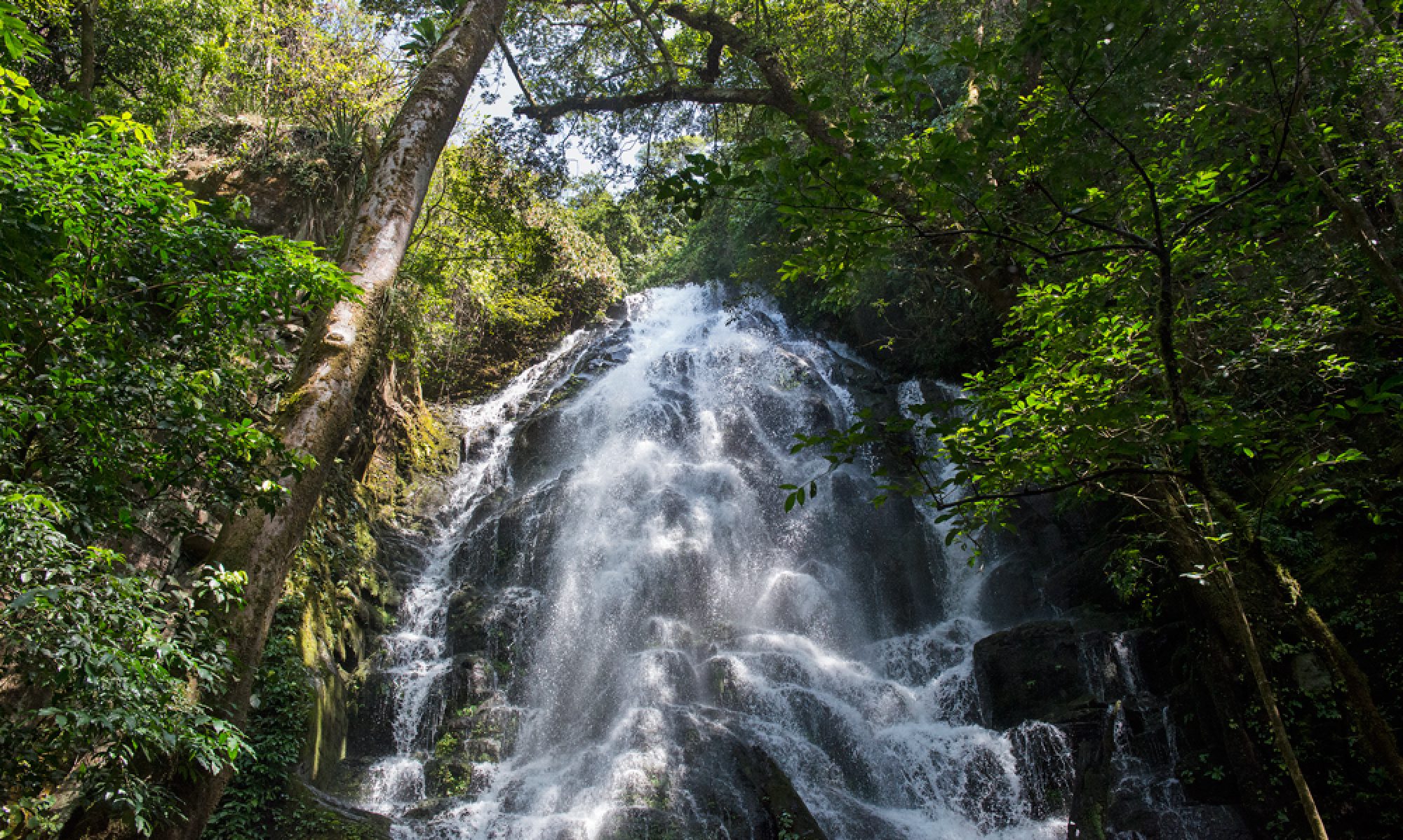Photos by Danielle Pycior
Written by Bry Barber
Our tour guide, Julio Rojas, led us up a narrow dirt path into the developing forest behind La Calandria Lodge.
We were on our way to pack soil for seeding trees in the Bellbird Biological Corridor, which stretches from the Pacific Ocean up to the Monteverde Cloud Forest.
About 50 feet along the path, the lodge was barely out of sight when he stopped and turned to face the group to explain how the forest was changing. He knocked on a tree trunk — a hollow pop! pop! rebounded.
It was a cecropia tree. Azteca ants live inside and feed off its nutrients and sugars. “They protect this tree,” he said. “If you shake it, they will attack you.”
Rojas looked up and pointed to its sparsely leafed top. He said since cecropias only have leaves at the top to absorb sunlight, they are usually part of a young forest. This forest, he said, is about 50 years old.
As we continued our walk, Rojas explained the forest was formerly farmland or pasture. “Imagine being on this land 50 years ago, or 60 years ago, or 70, or 80.” A forest would not have existed.
That’s where Rojas’ conservation work comes in: bringing the forest back to life. And that’s when we got to get our hands dirty.
We packed black plastic bags the size of small coffee canisters with soil for native tree seeds to germinate and begin their lives in the corridor. Rojas offered gloves, but we didn’t use them. We wanted to feel the soil between our fingers. We encircled a waist-high table covered with a large mound of soil. About half a dozen metal scoops, their handles rising like silver seedlings from the bottom of a mountainside forest, were staked into the dirt mound.
I pressed my hands into the warm pile of dark brown earth. The soil seemed to spring back into my palms, pulsing with the heartbeat of future life. I felt a deeper connection with the forest. I grabbed some of the larger chunks of soil and crumbled them in my hands, feeling it’s grimy, damp texture and the way it molded against my skin when I squeezed it. It crumbled easily, but still had enough moisture to pack well.
We laughed around the table as we packed the dirt, all the while connecting with our sense of touch in a grounding experience, and finding small pleasures in that moment. “This should be our new anxiety relief activity,” Danielle joked.
In the end, we packed 30 bags in 30 minutes. It may have been a modest exercise in healing the forest and we may never see the results in our lifetimes, but it was at least a small contribution to the corridor. We also learned about the process of restoration, which hopefully will improve the lives of future generations.
And it was a lot of fun.
Edited By Mark Powers

 Illustrated by Abby Blenk
Illustrated by Abby Blenk
